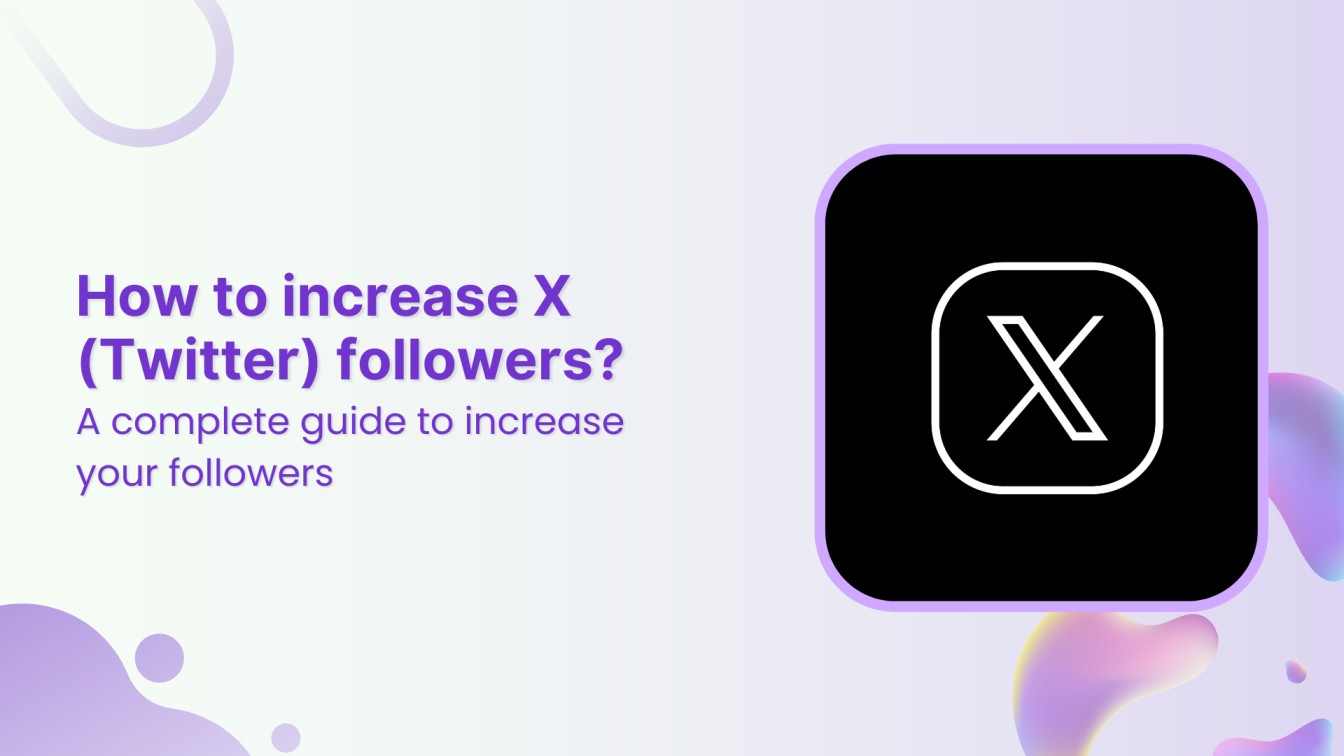Have you ever thought about making social media advocates? It’s a fancy term for loyal fans and audience on social media that engages, responds, and communicates with you every time you hop on to a social media network to talk about something. Nowadays, social media standards and norms are changing, and brands are aware of taking their relationship with the customers and prospects to the next level, and social media does provide a perfect avenue to make that happen.
Between all these things, we often get caught up in the social media stereotypes that we forget the fundamentals of social connectivity inside the organization. The race to dominate the niche, or to increase the ROI, or transactional approach have turned social media management into a commodity that everybody wants to squeeze.
Employees are an essential pillar of any company; they contribute to the operations and play a role in keeping the customers satisfied. The idea of turning employees into social media advocates is that how one can create an environment where employees feel more than workforce and go hand in hand with the company.
Simon Sinek rightly said, “customers will never love a company until the employees love it first.” Simon is an author, speaker, and trainer. He often talks about leadership, relationship with employees, corporate culture, and work-life balance. He left his corporate job, wrote a few books, and became a thought-leader in the business world. His speeches often shed light on social media, parenting, and relationship with employees.
The thought process behind this blog post is that how brands can convert their employees into a loyal representation. Although it does seem like a two-way street, companies are supposed to infuse that mindset into their employees and entertain the approach of empathy, care, and protection in the first place.
We’re living through a time when traditional media such as TV, radio, newspaper, and outdoor advertising are being replaced by Netflix, social media, podcast, mobile phones, and apps. Isn’t it a good idea to think about how we can use social media management to build a deeper connection with our employees?
Moreover, you’ll understand how you can cultivate the social media advocacy among your employees once you go through all the points that I’m about to reveal with you.
So without any further ado, let me present to you six strategies to turn your employees into social media advocates:
- Take their input in the decision making
Leadership isn’t all about giving the orders. Instead, it’s a responsibility of creating an ecosystem that provides an environment in which opinions have value. The key element of social media advocacy is based on the importance that a company develops towards its employees. One of the best ways to develop trustworthiness and confidence is by taking their input in the decision making.
What this means is that make them feel part of the team. If ten employees are present in the conference room for a meeting, and two of them are actively participating in the discussion, and the rest of them are working on their Macbooks or noting down points on diaries, then there is a communication gap in that room. Being a boss, you should know that every player in the team has its importance. Taking each and everyone’s opinion not only will boost their self-esteem, but it would also improve your relationship with them. The employees would surely feel important and respected.
The point is that it’s not just limited to conference rooms or team meetings; the best avenue to ask for their help or opinions is social media. It will allow you to put your conversation on a pedestal for everyone to see. The companies which have built a culture of respect, empathy, and love, they find it very easy to navigate and follow up such things that develop humility.
For instance, I searched the term “best boss ever” on Twitter and I came across hundreds of thousands of tweets of employees about their bosses and vice versa. Take a look:



Here’s another one:



Surprisingly, both these tweets are from subordinates who are wishing birthday to their bosses. Does it seem that there is a connection between these bosses and subordinates? It sure looks that way.
The result will never be seen overnight; in fact, it does take time to appear, but you won’t be disappointed in the long run. Consider it the first of the few baby-steps that would have to take in order to get going.
- Mention them on social media
Social media is a crowded space; hundreds of thousands of people are talking, posting, commenting, and reacting to the content and activities at the same time. When we specifically mention someone close to us or someone we work with, it’s a big deal and a way of showing appreciation towards them. Not only do they feel proud of what they do, but they also respect you more. The recognition is a human satisfaction and thus, we feel privileged when our work or effort is acknowledged.
You may have more friends on Facebook, then you have in your real life — that’s the power of social media, and which is why this point is so important to understand and apply. Now, the critics of social media think that we talk less to each other and look at our phones more because of social media; it’s a whole different debate. You can’t stop people from doing what they want to do. So the best we can do is leverage the situation.



Adam Grant talked about the givers in his book “Give and Take.” One of the things he tried to convey was that givers don’t take full credit, but instead, they share it with the team. They make their subordinates feel that their contribution to the cause was essential for getting the job done.
Buffer is a fantastic social media scheduling tool. They have an amazing team that puts out great content. One of the things you’d notice on their social media profiles is that they often mention their team members when they need to credit them. Not only does it make the employees confident, but it also gives them a sense of pride when their ideas or suggestions are valued.
If you look at the tweet screenshot below, you’d see that the official Twitter account of Buffer tweeted their Marketing Director’s quote, which proves that there are companies out there which also believe the same.



If you want to teach your employees social media management and stand tall, you’d have to respect their presence and mention them from time to time so that they could know what you think the others know that you have a fantastic team of employees, and the company wouldn’t have done it without them.
On the other hand, the results could be phenomenal for the company. The reason is that when you’d mention them, and they’d also mention the company time and again, it could attract new eyeballs and bring in more engagement, and thus, the company could end up getting more clients just because of that. In the realm of social media, positive engagement is a virtue.
- Highlight them in the content
One of the underrated strategies of online attention and engagement is highlighting the employees in the content. When you’re on the same team, there is a lot to agree on, and using that in the content could turn things around for any brand. Social media advocacy isn’t something you get right off the bat. Instead, you build a connection and earn it along the way.
Highlighting the employees in your content would make them feel proud and energized because they’d feel that their opinions matter at work. It makes employees more enthusiastic to contribute to the cause and give their best shot.
The team at Shopify knows this. I scrolled through many official blogs of popular SAAS companies and spent around 45 minutes finding a reference where they mentioned their employees in their content, but I didn’t find it except for Shopify. Not only did they quoted their employee, but they also explained who the person is.
Take a look at the following screenshots:



The author goes on to quote Brent multiple times in the blog post. Here’s just one example of that:



So this is exactly what I’m saying. Brent would be so motivated to give his input the next time he would have something to say at a meeting.
I’ve seen some examples where authors and bloggers often refer to the guest posts written by others on the official blogs; they do this out of respect. It makes guest authors feel good when their piece of content is appreciated by a brand. Here’s an example:



A team member at Copyblogger wrote this blog post and started off by admiring a guest post written by someone else who wasn’t the employee at the company.
So highlighting others in your content doesn’t make you any smaller, in fact, it strengthens your relationship with others, especially with your employees or coworkers.
- Do one-on-one meetings
One-on-one meetings mean sitting down with an employee and discussing various aspects of his or her job after a specific period. It could lead to opening new doors of improvement and productivity along the way. You might not want to do every month, so choose a specific time, for example, six or twelve months but do it across the board.



Gary Vaynerchuk does this one-on-meeting with the employees. He often shows snippets of these one-on-one meetings with the employees in his vlog.
Most of the readers reading this blog post have had many meetings at their jobs. I have seen and attended meetings at work, but this is a little different; a one-on-one meeting should be about discussing the organization and employee’s relationship, and how it could improve to help bridge the gap between them.
In fact, you could talk about the productivity, work environment, relationship with co-workers, facilities, and challenges being faced. This provides us the opportunity to listen to our employees about what they’re going through and what the company could do to facilitate them. On the other hand, it gives the founder a chance to communicate the ideas and thoughts to the employees as well.
What one-on-one meetings would do is that it would give a chance to empathize with each other and understand each other’s point of view. In the grand scheme of things, it would help turn your employees into social media advocates.
- Credit them publicly
There is no better way of appreciating your hard working employees than giving them credit publicly. We all have seen speeches at the company’s annual dinner parties when the boss stands up and starts off the speech by telling how valuable the employees are for the company.
Crediting them publicly is slightly different than giving a speech at a dinner table; it means remembering the team member who brought up an idea or who hinted the problem in the first place, and mentioning it in front of everyone.
What it would do is that it makes everyone motivated to do something extraordinary for the company.
Have you ever seen the employee of the month notification on the office notice board? It is important to keep track of employee monitoring as well.
Take a look at the screenshot below:



Well, an employee of the month is a fair example of crediting the employees publicly.
It reinforces the company’s culture of praising the hard work and competency. Not only this, but it also rejuvenates the other employees to work harder and earn the appreciation. It doesn’t seem like a big deal, but it has some psychological impacts.
It would create the environment where employees would feel proud to be associated with the company, whether it’s on Twitter or after-work-party – they’d start to defend the company they work for.
- Preach work-life balance
One of the popular topics of discussion in the world of entrepreneurship is the work-life balance. Now people are curiously interested in the concepts of work and hustle. There are a lot of things that are interconnected such as corporate culture, productivity, efficiency, and mental health.
Preaching work-life balance means that it’s important to articulate what matters the most. Besides, every organization has a different approach towards their employees, and every organization wants the best for their employees. A proper ground-work at the company’s level, which includes but limited to awareness workshops, could be a game changer. The awareness doesn’t do any good if the ideas aren’t being translated into reality. If you’re preaching work-life balance to your employees, meaning, you’re guiding them to take care of their health, fitness, productivity, diet, and relationships, or how they can thrive in all these areas, but workload at the employees are killing their personal lives, then you’re doing it wrong.
The science behind preaching work-life balance to the employees is that it’s a way of showing empathy and sincerity towards them. If your company becomes a type of organization that thinks of their employees first and go one step ahead of all to prove it, then you’re all set to turning your employees into social media advocates. The reason is that we are addicted to social media; the attention lies on these social media platforms. People either talk on WhatsApp or Facebook these days; they discuss things online all the time. The point is that if you want your employees to defend the organization anywhere they hang out, you need to deploy kindness, empathy, and solidarity towards them.
The Ending Part
Your employees are your greatest asset. We talk and hear a lot about employees, but there are many companies that go out of the way to train their employees and complete employment testing. They understand that their employees deserve this, and if they acquire advanced skills, they’d perform even better. Therefore, companies invest in their employees.
Social media advocacy isn’t something we often hear on Twitter or YouTube, but if you came across this blog post through search, or you clicked-through the article link on social media, it means you’re interested in this topic. And, I have a gut feeling that you’re on the right track because if your employees become your marketers, your company is going to win. This happens when your employees are proud to associate themselves with the company they work for, or mention the company on social media, or talk about their great experiences at work. All these things don’t immediately get converted into transactional benefits, but they help the organization down the road.
Here at ContentStudio we instill the culture of social media independence and constructive criticism. Our founders encourage us team members to step up our social media involvement. We strive to build a strategy that creates an ideal environment for social media advocacy.
It won’t be wrong if I put it this way: if you want to turn your employees into social media advocates of your company, do something that improves their lives and career regardless of what company gets out of it.
That’s it.
What do you have to say about this topic?
Let’s hear your ideas in the comments section.
Wasiq Naeem
Wasiq Naeem is a content and digital marketing veteran who is passionate about his writing. Extensive research and producing high-quality content is just another day at the office for him.






